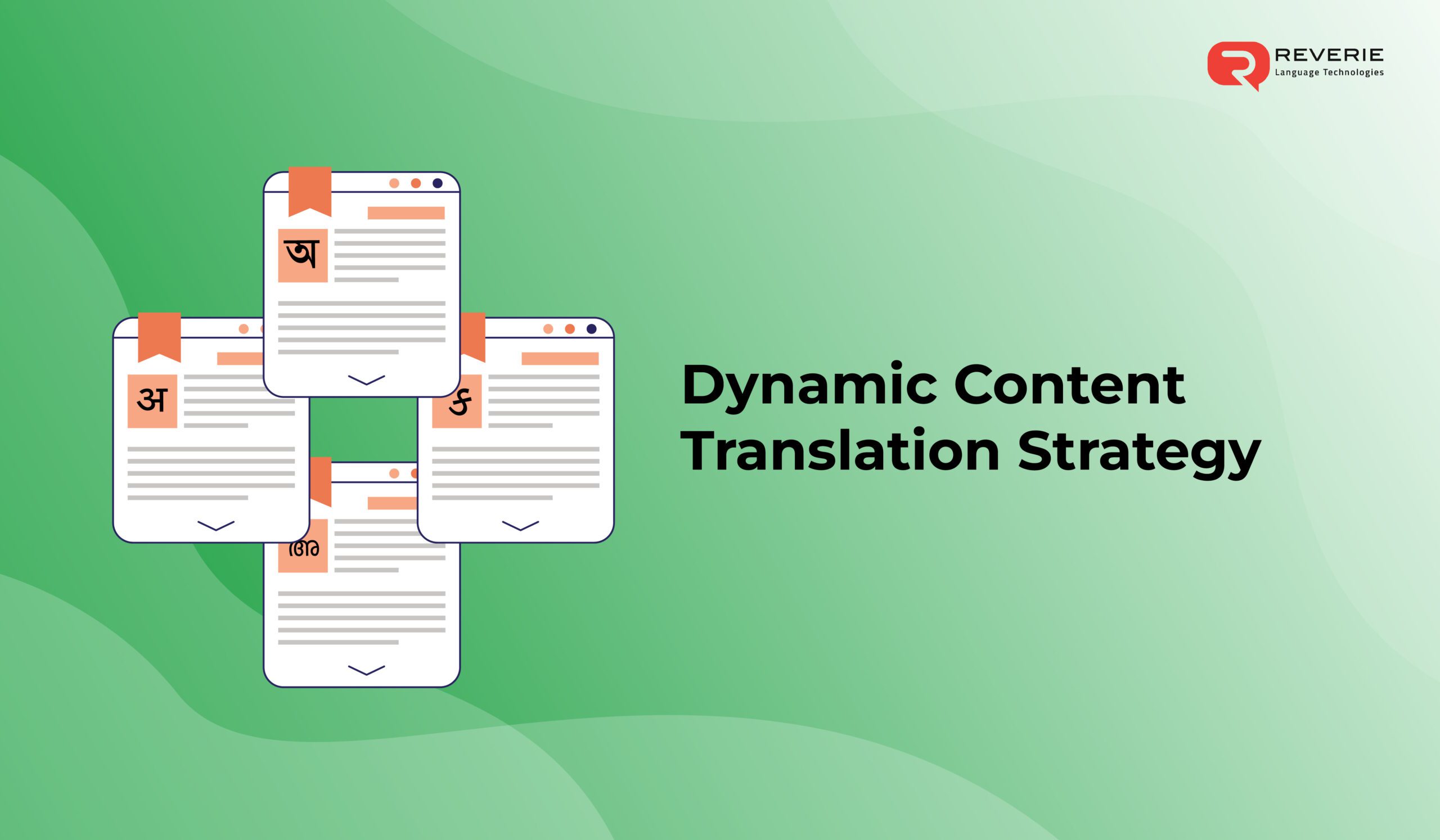In the digital landscape, it has become crucial for businesses to develop the ability to cater to diverse linguistic audiences. This is especially true for a country like India which has 22 official languages specified in the 8th schedule of the constitution of India. Did you know, about 70 to 75% of the internet users in India prefer content in their local language? This shows that businesses that aim to tap into the country’s lucrative market must have a multilingual website that can cater to the needs of its diverse audience. However, it’s not just about translating the content but doing it in a way that is natural and seamless.
This is where dynamic content translation comes in and breaks language barriers to offer an inclusive online experience. It enables real-time and context-aware content translation on a website. With this strategy, businesses can expand their digital footprint throughout the country and reach a wider audience with varied linguistics. In this post, we deep dive into strategies for implementing dynamic content translation on your website and its impact. But first, let’s get familiar with dynamic content and dynamic content translation.
Understanding Dynamic Content Translation
Dynamic content is the heartbeat of modern websites, transforming static pages into vibrant, interactive experiences. This content dynamically adapts based on visitor’s preferences, behavior, and interactions. Thus, offering a tailored browsing experience to each visitor, making each visitor’s experience unique and engaging.
Dynamic content translation is much more than just translating the text or content on a website. It translates the content in real-time into the preferred language of the visitor. This process does not just convert text from one language to another, it contextually adapts the website’s dynamic elements to resonate with the diverse audience. It ensures that all users, no matter what their linguistic background is, can interact with and understand every piece of website content easily. The content pieces can be anything from product descriptions to chatbot interactions.
Implementing dynamic content translation for a website involves sophisticated technology. It involves detecting a user’s language preferences and instantly rendering the website’s dynamic content in that language. This instantaneous and real-time translation helps in maintaining the fluid, responsive nature of dynamic content. It ensures that the personalised experience is not lost in translation. With this approach, businesses can broaden their audience reach and deepen their connection with their users. Let’s learn more about why businesses should invest in dynamic content translation.
Why Businesses Need Dynamic Content Translation
With the strategic implementation of dynamic content translation, businesses can ensure that their users can understand the content they are consuming. This not only enhances the website’s ability to attract a wider audience but also retain the users. With this strategy, businesses can tap into segments that were previously unexplored. A survey by Common Sense Advisory revealed that businesses that invest in translation are 1.5 times more likely to report higher revenues.
However, dynamic content translation can often be challenging, involving a lot of technical complexities. This is where Reverie’s Anuvadak comes into the picture. Anuvadak is a revolutionising tool that boasts of an Indian language-specific neural machine translation engine. Let’s read more about the strategies to implement dynamic content translation for a website and how Anuvadak helps in real-time content translation.
Strategies for Implementing Dynamic Content Translation
Leverage Advanced Language Tools
When it comes to the realm of dynamic content translation, employing the right tools becomes a key factor. Among these, Reverie’s Anuvadak stands out as a comprehensive solution. It is designed to bridge the language gap between businesses and their customers on digital platforms. This tool is not merely about facilitating language conversion but also about enabling cultural nuance, contextuality, and personalization. It reimagines the way businesses communicate with their linguistically diverse audience, ensuring that every piece of content resonates with the visitors.
Reverie’s Anuvadak addresses the challenges of dynamic content translation in the Indian context. The advanced features of Anuvadak include:
- Automated Translation Workflow: Streamlining the translation process, Anuvadak’s Translation API leverages cutting-edge technology to automate the translation process. This reduces the time and effort required to publish multilingual content, ensuring efficiency and consistency across content catalogues. The automation also extends to the integration of new content by detecting and sending it for translator review. This makes it easier for businesses to maintain a coherent and multilingual web presence.
- Comprehensive Language Support: Given India’s linguistic diversity, Anuvadak supports multiple Indian languages, making it an ideal tool for businesses in regional markets.
- Contextual Relevance: With the integration of Natural Language Understanding (NLU), Anuvadak ensures that the original message’s intent, tone, and cultural context are not lost in translation.
Monitor, Analyze, and Iterate
Dynamic content translation is a continuous process that requires diligent monitoring, comprehensive analysis, and constant iteration. Businesses can utilise analytics tools to track user behavior across varied language versions of the website. They should also pay close attention to metrics like time spent on the page, bounce rate, and conversion rates to ensure that the translated content is performing well.
Businesses can use these insights to refine their content, address any language-specific issues, and improve the overall user experience. It is also crucial for businesses to regularly update and optimize their translated content to ensure it remains relevant and engaging.
The Impact of Dynamic Content Translation
The strategic implementation of dynamic content translation can transform a website’s reach and user engagement. It can lead to longer session durations and lower bounce rates, as the content on the website becomes more accessible and relevant to a diverse audience. They feel valued and understood, which helps win customer loyalty. This strategy sets the foundation for sustainable growth for a business and provides it with a competitive edge in the market. A survey showed that nearly 72.4% of consumers are more likely to purchase a product from a website in their own language.



